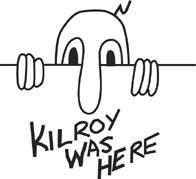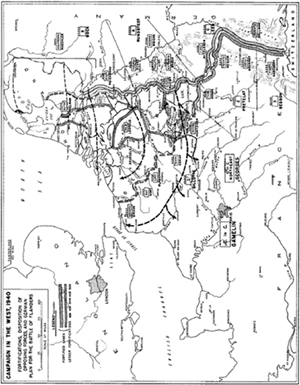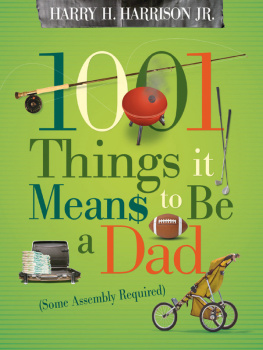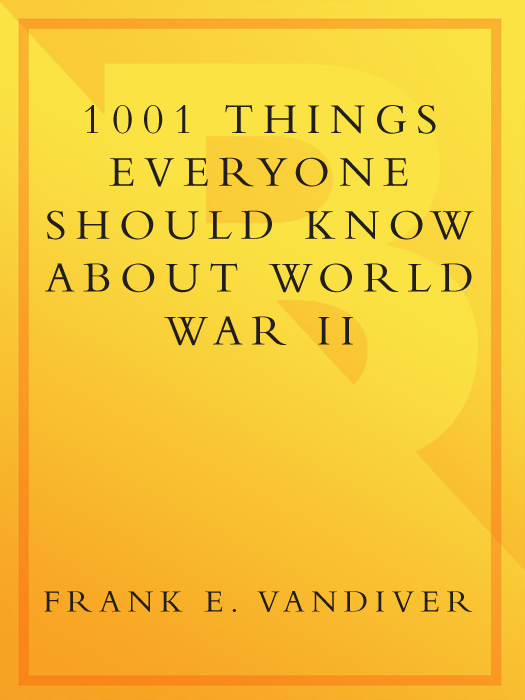ALSO BY FRANK E. VANDIVER
IN THIS SERIES:
1001 Things Everyone Should Know About the Civil War
To Kilroy

PREFACE
No selection of 1001 entries could encompass the size, sweep, carnage, cost, heroism, and anguish of World War II. Much more truly a world war than the Great War of 191418, the second global conflict raged through Europe, Asia, Africa, the Middle East, and across most oceans. Somewhere between fifty million and seventy million people perished in it or because of it, and the wounded defy statistics. A new style of war emerged, a combination of air-sea-land actions orchestrated into strategies of movement in which logistics played the most vital role. War leaders, civilian and military, garnered such fame as to make them nearly the dominant figures of the twentieth century. All important national leaders have biographical sketches in this book save Franklin D. Roosevelt, who is so central to the war that it is a surrogate sketch in itself. Obviously, the choices are not Everymans; some readers will be irked by whats in, others by whats out, still others angered by imbalances. I offer not a comprehensive history of World War II but, rather, my personal selection of important things that shaped it or were shaped by it; some things the war caused or modified; some people important to it or in it; some unusual things that happened; people who ran it, suffered it, and survived with an overwhelming awareness of the price of peace.
Two caveats: First, there are varied versions of some of my selectionsif mine is not the one you know, remember these are my highly personal choices and probably not the same ones I would make if I did the book again. Second, repetitions in the book stem from a desire to offer a straightforward narrative while permitting subtopics to be followed chronologically.
My gratitude goes to many for help that made the collection and composition possible. Dr. Scott Bowden, University of Texas at Arlington, unscrambled the timing of the launch of Operation Barbarossa with typical courtesy. William B. Schell gave me an important collection of Nazi photographs. Edith Anderson Wakefield, College Station, my incomparable research assistant, did her customary splendid work in suggesting topics, in checking facts and numbers, in selecting pictures and fashioning captions. Ms. Shannon Maxwell, my administrative assistant at Texas A&M University, suffered through various drafts of the manuscript with customary good humor and skill. Gerald Howard, my splendid editor at Broadway Books and student of World War II, kept me focused on the facts; his splendid assistant, Jay Crosby, pushed things along to deadlines. I am permanently indebted to them both. My thanks to my agent, John Hawkins, who smoothed the way with customary wit and toleration. I am in endless debt to the staff of the Sterling C. Evans Library of Texas A&M University for letting me check out books far too long and for patience beyond the ordinary in facilitating interlibrary loans.
My wife, Rene, lent her artists eye to picture selection and her acute critical ear to the book during composition, endured long reaches of isolation, and remains my severest critic and dearest friend.
A comprehensive World War II bibliography would require volumes. For brief and stimulating overviews, I recommend the encyclopedic I. C. B. Dear and M. R. D. Foot, editors, Oxford Companion to World War II (1995, and unfortunately already out-of-print), and the more popularly written C. L. Sulzberger and Stephen E. Ambrose, American Heritage New History of World War II (1997). This work is deeply indebted to the many contributors to the Oxford Companion as well as to C. L. Sulzberger, and the editors of American Heritage, American Heritage Picture History of World War II (1966), Louis L. Snyder, Louis L. Snyders Historical Guide to World War II (1982), Jonathan Heller, ed., War and ConflictSelected Images from the National Archives, 17651970 (1990), Vincent J. Esposito, ed., The West Point Atlas of American Wars, Vol. II, 19001953 (1959), and Richard Holmes, World War II in Photographs (2000).
Frank E. Vandiver
College Station, Texas
January 2002
CONTENTS

193940
THE FIRST YEAR OF THE WAR

DEADLY PERIL
Haile Selassie I of Ethiopia
Adolf Hitler sent five armies into Poland on September 1, 1939, in a surprise attack. Of Polands two million first-line troops, only a third were in the field. Polands cavalry was chopped up by German armor, and its few planes were smashed on the ground in a massive sweep by the Luftwaffe (the German air force). Poland fought bravely, hoping for British and French help, but was stabbed in the back by Russia on September 17, 1939. (Stalins armies took most of eastern Poland but blocked Germanys route to Galicias oil and to Romania.) Warsaw held out until September 27the blitzkrieg had triumphed in one month.
Great Britain and France, Polands pledged allies, still squirmed to negotiate but finally, on September 3, 1939, both declared war on Germany. British prime minister Neville Chamberlains dream of peace died with the blitzkrieg, but neither he nor Premier Edouard Daladier, Frances virtual dictator, had strong public backing for war. Support came with the invasion of Poland.
The Allies (they quickly were known by that old term) expected Hitler to turn on them swiftly. He fooled them and the world by keeping a garrison behind the facade of the Siegfried Line (q.v.) facing Frances vaunted Maginot Line (q.v.) during the winter of 193940. Frances sprawling concrete warrens and tank barriers were new engineering marvels devised to prevent the appalling trench warfare of World War I. French troops, convinced of Maginots impregnability, huddled in confidence despite their failure to connect with Belgian defenses. British soldiers, happy with the winter Sitzkrieg, or phony war, enshrined it in song:
Were gonna hang out the washing on the Siegfried Line,
Have you any washing, Mother dear?
Were gonna hang out the washing on the Siegfried Line,
A cos the washing day is here.
Whether the weather may be wet or fine,
Well just rub along without a care,
Were gonna hang out the washing on the Siegfried Line,
If the Siegfried Lines still there.
Hitler correctly gambled that the French would not venture out of their forts and moved to deal with other parts of Europe, while his newly resurgent navy threatened Britains sea power.
While Stalin made peace with Finland in March 1940, ending the Winter War that so embarrassed the USSR for two years, Hitler concentrated on securing his flanks and acquiring bounteous strategic supplies. Petroleum products and steel were essentials. Hitler needed access to the Atlantic for petroleum and looked to Sweden for iron ore.














